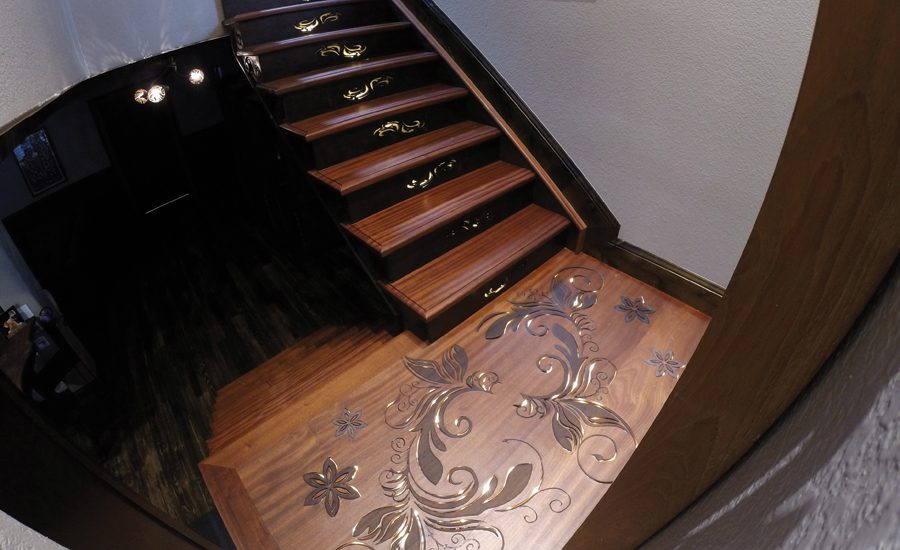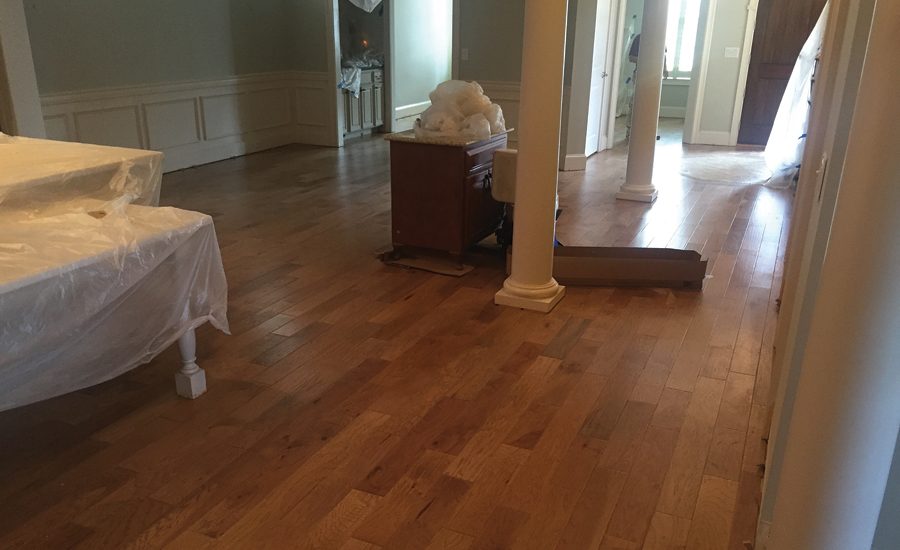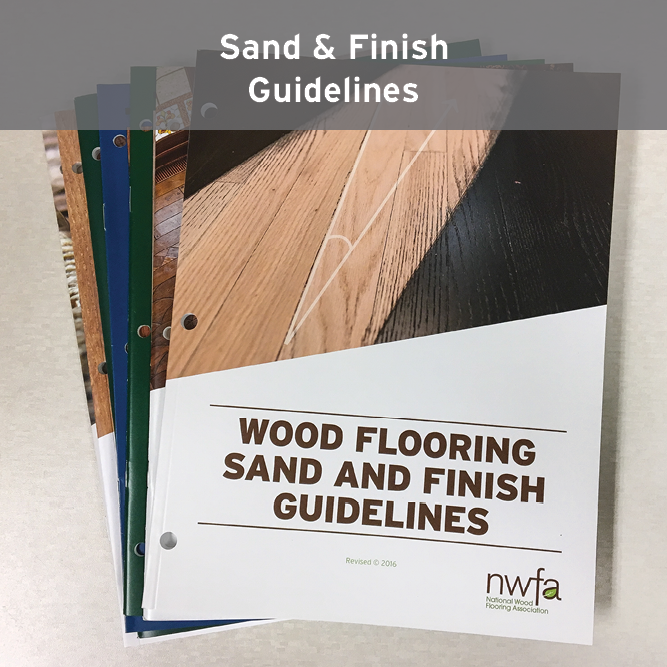2016 FCI Installation Awards: The Winners


The Oak Creek City Hall and Library project, which earned Adair Commercial Flooring an award in the Commercial Resilient category, features waterjet-cut Mannington Nature’s Paths LVT in circular patterns.





David Griego’s installation—which earned him a Residential Carpet award for the second year in a row—features exact pattern-matching of a leopard print carpet. The installation was complicated by pet urine that had soaked into the fiber subfloor, causing it to swell and requiring replacement of several areas.

David Griego’s installation—which earned him a Residential Carpet award for the second year in a row—features exact pattern-matching of a leopard print carpet. The installation was complicated by pet urine that had soaked into the fiber subfloor, causing it to swell and requiring replacement of several areas.












The votes from our readers are in for the third annual FCI Installation Awards. This year’s contest, sponsored by ProKnee and Schönox/HPS North America, featured a few firsts—including two repeat winners and the first tie in a category. Along with a plaque commemorating their achievement, all winners will receive a pair of ProKnee Custom Model 0714 and AP16 All Purpose kneepads, courtesy of ProKnee.
As in previous years, this year’s contest awarded the best and most creative installations in a range of flooring categories in both commercial and residential settings.
Commercial winners are:
- Carpet—John Lancor, H.J. Martin and Son, Inc.
- Ceramic Tile/Stone—Spectra Contract Flooring
- and Resilient (tie)—Adair Commercial Flooring, Inc. and Preferred Flooring.
Residential winners are:
- Hardwood/Laminate—Joseph Rocco, Artistic Floors by Design, who has swept this category all three years
- Carpet—David Griego, Far Out Floors (his second win in this category)
- and Ceramic Tile/Stone—Leandro Nascimento, Professional Flooring Services.
Commercial Winners
Lancor was the on-site foreman for the Fox Valley Hematology and Oncology Center project in Appleton, Wis. He was joined by David Stevenson, Jake Greenwald, Robby Scultz and Mike Weidner in the 10-month project to install more than 16,000 sq. ft. of flooring in the newly built $17 million hospital. The hospital features Mannington Commercial and Interface carpet tile, Shannon Specialty Floors’ Teknoflor sheet vinyl, Altro safety flooring, Shannon Specialty Floors’ Tuf Stuf LVT, Mannington VCT and 4,300 sq. ft. of Edimax, Crossville and Daltile ceramic tile on the floors and walls.
The biggest challenge was getting the subfloor prepped for the installation of vinyl flooring, recalled Lancor. “There were two rooms where people receive chemo and they both featured giant floor-to-ceiling windows. For whatever reason, one end of the building dove off; the concrete was out of level by about two to two-and-a-half inches. It took us more than 250 bags of skim coat in those two rooms. We used Uzin NC 886 Skim and Repair Compound, and NC 182 Low-Slump Smoothing Compound. It was usually just me and one other guy working on this—with sometimes an extra helper here and there—during our busy summer months.”
Elsewhere in the installation, Lancor said he and his installers had to meet up carpet tile to vinyl without using transitions, which also required expert leveling. The crew also had to hand-groove large arcs out of vinyl in the lobby and on the second floor.
With Lancor leading the carpet/resilient crew and another foreman heading up the ceramic tile installation team, the four- to six-person H.J. Martin and Son crew was only allowed into the hospital for nine hours a day. When asked how he managed to complete his part of the project with such a tight deadline, Lancor stated: “We would go in and say to people, ‘We’re taking over this room. And we’re not coming out until it’s done.’”
Tyler Adair, president of Adair Commercial Flooring, said his team worked on the Oak Creek City Hall and Library project in Oak Creek, Wis., for three months. Installers were Shawn Verbanac, Erik Maki, Dan Szerbowski and Josh Schultz.
They, too, ran into a subfloor preparation issue—in the form of high relative humidity in the concrete. “The RH value was 99% for concrete that already been down for nine months. We were getting these bad readings over an underground garage. The only thing I could figure is the concrete panels must have still had water in them when they were set in the wintertime,” Adair said.
Before they could put down 10,000 sq. ft. of Mannington Nature’s Paths LVT in waterjet-cut patterns on two floors, they needed to figure out a solution to the moisture problem. A representative for Base King’s EnviroStix was in the area and stopped by. “He told us, no problem—we can solve that. Unfortunately we didn’t have it in our bid, so we bit the bullet and paid the extra money to have it applied to that square footage. We had enough margin in the job to absorb it.”
Adair continued, “I used to install when I was a young man, and did it for about 25 years. I was taught by my dad, and he was taught by very good people. He always told me to do the job right, and not take any shortcuts. We paid the cost ourselves because I wanted to sleep at night and not have a flooring failure.”
The company sent the flooring down to Base King, where they backed the LVT with the EnviroStix adhesive and sent it back to Adair. “Once everything was set up, we had to lay the groundwork with the GC. We needed a dust-free environment and there were probably 250 other people working on the site.
“We had scrap carpet in our warehouse and I proposed to the 20 trades around the table at one meeting that we’d go ahead and lay those scraps at every entryway to help cut down on the gravel coming in from the driveway. I told them, ‘We need everyone’s help here. We all need to clean up at the end of every day so garbage doesn’t get pushed around.’ The GC had a good attitude and helped enforce it.”
The other resilient winner in the commercial category, Preferred Flooring, had to self-level nearly 13,000 sq. ft. in two floors of a hospital in Holland, Mich., before installing intricate floral insets made out of LG vinyl flooring in 17 patient rooms on each floor. Installers on the project were Jose, Daniel and Crystal Gonzalez.
Daniel Gonzalez shared the details. “The project overall featured 1,440 square yards of sheet vinyl; 4,000 linear feet of heat weld; 1,200 linear feet of flash cove; 2,700 sq. ft. of VCT; 1,240 square yards of carpet tile; 3,200 linear feet of vinyl base and 2,000 linear feet of carpet base. The total area was 26,820 sq. ft. The flooring contractor was Welch Tile & Marble Co., and the GC was a joint venture with Lakewood and Elzinga & Volkers.”
Both floors needed to be self-leveled because shot blasting had left the floors completely pitted. “We were in there for quite a while prepping in this two-month project,” Gonzalez noted. “The hospital was shocked. They thought shot blasting was going to get rid of the imperfections, and we’d just skim coat it and call it good. The self-leveling took a while to complete, but it actually saved us some time in the end.”
Regarding the floral insets, Gonzalez remembered: “It took quite a bit of work because everything was hand-cut. It took some time, and the hospital gave us six rooms at a time. After the prep was done, we got the floral patterns down before doing anything else. Then we’d go through the next day and get the field down in the rooms.
“We were under a time crunch, and were working about 60 hours a week—usually two mechanics and two laborers.”
Editor’s Note: At press time, the Commercial Ceramic Tile/Stone category winner had not been interviewed yet. We will feature their project in an upcoming issue.
Residential Winners
For his third win in a row in the Hardwood/Laminate category, Rocco and fellow installer Kevin Eder created a stairwell landing over four months that includes freehand routing, scrollsawn risers and skirt, Arboritec Miracle Oil and Genuine Waterborne Polyurethane finishes and a custom detailed nosing. If that wasn’t enough, the entire installation is backlit with LED lights.
Rocco said the stairwell landing complements the Polynesian-inspired motif that continues down into his home’s basement. He created the project and installed it at home because “it’s very difficult to find people who want something other than a flat floor, and I wanted dark wood, interesting patterns and lots of texture.”
He added, “The whole idea behind the backlit part is I was thinking of the sun setting, and the reflectiveness of that sunlight as it moves across a floor pattern.”
Rocco started the project with a big piece of sapelle. “We utilized our local Kinko’s to have the pattern blown up to the size we needed, then we used the age-old trick of gluing that print to the piece of wood and cutting out the pieces we wanted to be raised. We used a jigsaw to cut out the backlit pieces first. Then we used a router and router sled to take out most of the material outside the pattern. We used various Festool sanders to do all the edge profiling. After that it was all pretty much by hand, using different sanding sticks to get the soft sculpted look. Then we filled all of the backlit area with clear epoxy so we didn’t have stuff falling through the backlit cavity. I would guess we put in about 160 hours total on the project.”
When asked how he felt about winning the hardwood category for the third year in a row, Rocco stated: “My hope is that when people see my stuff, they are inspired to push the edge of the envelope and create something for themselves and their clients. I get to show other people the possibility of what you can do with wood floors. I want people to create something where they go, ‘Wow! I can’t believe I did that!’”
Griego, who calls himself “Dave the Carpet Slave” and is the owner of Far Out Floors, earned his second win in the carpet category for an installation of leopard print carpet from Karastan that he lined up with a leopard print pattern on the stairs. The client, a cat breeder, has leopard print décor throughout her house.
“If you look at the line of the border from the carpet to the stairs, the lines meet up perfectly. I had the colors switch at the border, so it’s sort of a positive-negative reciprocal feel. It makes the visual pop. She was blown away by that.”
One of the major challenges of this two-day installation was the subfloor. “The pet urine in the home was so extensive that it caused the fiber subfloor to swell, which required removing and replacing several spots. The sad thing is she had a very expensive frieze already down. I was able to salvage most of it. She did not order enough to properly match the pattern everywhere, but I was able to match it up in the visible areas of the room.”
Nascimento spent three days on his award-winning octagonal medallion installation. “I work for a restoration company and we have to be in and out quickly so the homeowner can return to their house. The medallion required precise cuts and some floor leveling, and the use of different materials for a pleasing final appearance.”
He came up with the design—which features tumbled stone in a grid, with a smaller stone border surrounding it and a second border of engineered wood leading out to the rest of the floor—because the homeowners wanted a rustic look.
“They had a chandelier near the stairs, right above where I put the medallion. The main challenge was making sure everything was flat and sound and level. I had to lay the tile and skim coat around the border, to make sure everything flowed smoothly from the stone to the wood. I had to ensure there was no lippage.”
Looking for a reprint of this article?
From high-res PDFs to custom plaques, order your copy today!



















